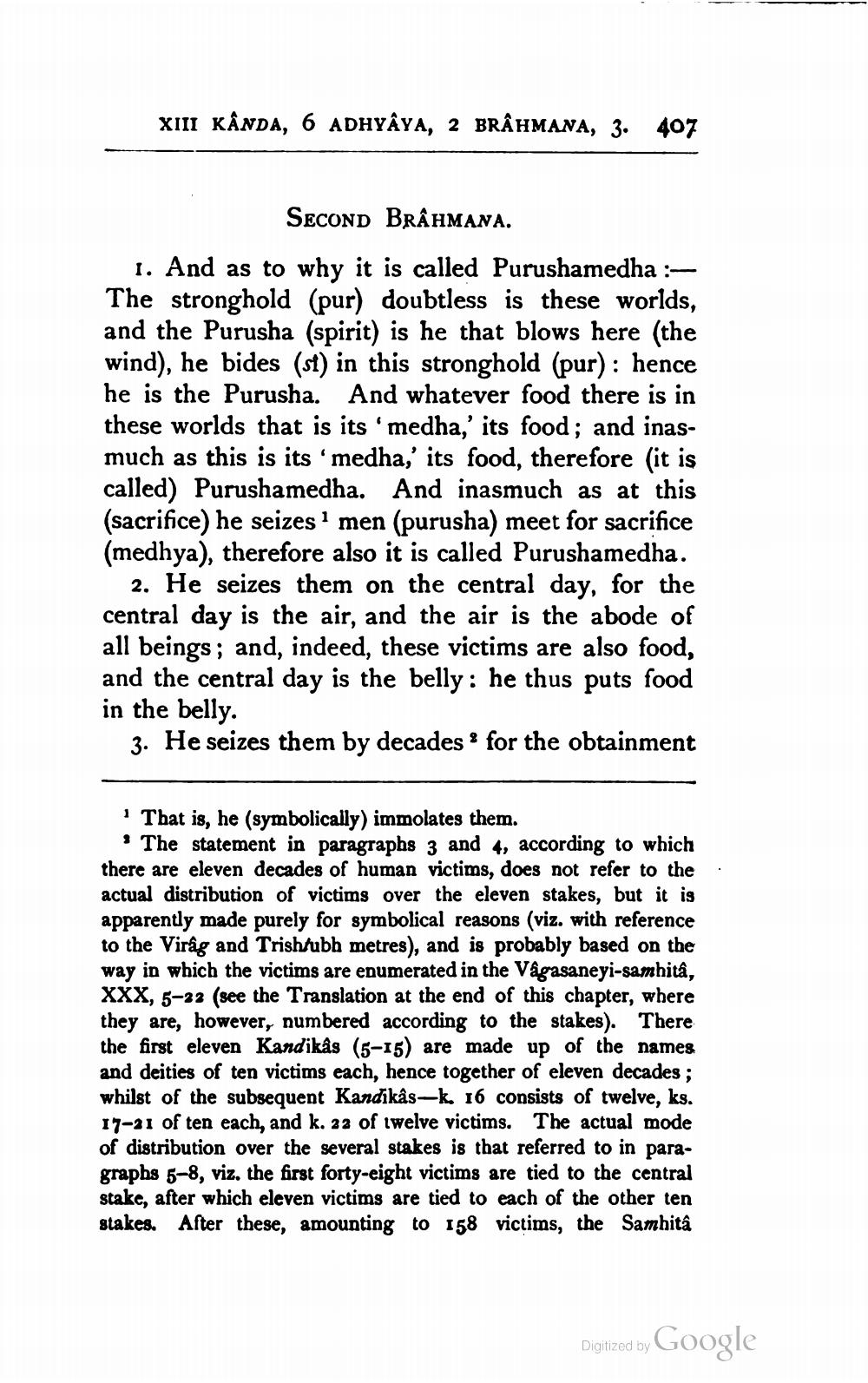________________
XIII KÂNDA, 6 ADHYAYA, 2 BRÂHMANA, 3. 407
SECOND BRAHMANA.
1. And as to why it is called Purushamedha :The stronghold (pur) doubtless is these worlds, and the Purusha (spirit) is he that blows here (the wind), he bides (sl) in this stronghold (pur): hence he is the Purusha. And whatever food there is in these worlds that is its 'medha,' its food; and inasmuch as this is its 'medha,' its food, therefore it is called) Purushamedha. And inasmuch as at this (sacrifice) he seizes 2 men (purusha) meet for sacrifice (medhya), therefore also it is called Purushamedha.
2. He seizes them on the central day, for the central day is the air, and the air is the abode of all beings; and, indeed, these victims are also food, and the central day is the belly: he thus puts food in the belly.
3. He seizes them by decades for the obtainment
That is, he (symbolically) immolates them. • The statement in paragraphs 3 and 4, according to which there are eleven decades of human victims, does not refer to the . actual distribution of victims over the eleven stakes, but it is apparently made purely for symbolical reasons (viz. with reference to the Virág and Trish/ubh metres), and is probably based on the way in which the victims are enumerated in the Vågasaneyi-samhitâ, XXX, 5-22 (see the Translation at the end of this chapter, where they are, however, numbered according to the stakes). There the first eleven Kandikâs (5-15) are made up of the names and deities of ten victims each, hence together of eleven decades; whilst of the subsequent Kandikâs-k. 16 consists of twelve, ks. 17-21 of ten each, and k. 22 of twelve victims. The actual mode of distribution over the several stakes is that referred to in paragraphs 5-8, viz. the first forty-eight victims are tied to the central stake, after which eleven victims are tied to each of the other ten stakes. After these, amounting to 158 victims, the Samhita
Digitized by Google




